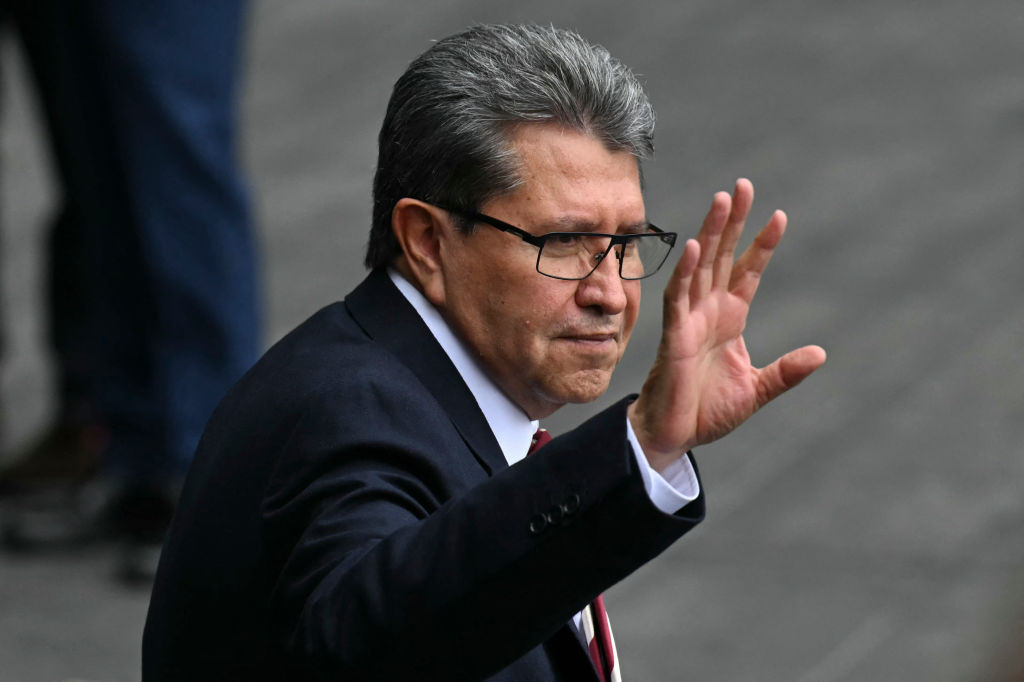Calderón Pulls Plug on Mexico City's Power Company
Calderón Pulls Plug on Mexico City's Power Company
Citing inefficiencies, poor service, and bloated costs, the government of Mexican President Felipe Calderón dissolved the country's second biggest electric company on October 11. But even as the move drew cheers, it also drew protests from unions and congressional opponents.
Hours after Mexico’s victory over El Salvador in a World Cup-qualifying match, less-than-celebratory events came to pass at the headquarters of a state-run electric company. In the wee hours of October 11, the government dispatched hundreds of federal police officers to seize the offices of Luz y Fuerza del Centro (LyFC), which supplies electricity to more than 25 million people in Mexico City and neighboring areas. Mexican President Felipe Calderón issued a decree disbanding the company and delivered a national address describing the firm’s losses as “unsustainable.” In the wake of the closure, Energy Secretary Georgina Kessel told reporters that LyFC’s inefficiencies cost the country the equivalent of a GDP point. However, Calderón’s government could face a political battle with unions and congressional opponents over the liquidation.
Sunday’s move comes in the midst of a tough economic climate, with Mexico affected by fallout from the global financial downturn along with twin fears over an H1N1 virus outbreak and drug cartel violence that have harmed tourism. Given the lean times, Calderón’s speech and decree cited a number of financial figures to demonstrate the need for LyFC’s overhaul. The firm’s costs amounted to twice its income and 2009 government subsidies given to LyFC were over $3 billion—nearly as much as annual expenditures on government social programs to combat poverty. Moreover, the government outlined weaknesses in company’s production as well as frequent power outages that damaged the capital’s competitiveness. During a press conference after the takeover, Secretary of Government Fernando Gómez Mont said LyFC had registered losses of electrical distribution equal to a third of its total production.
The Calderón administration sought to stem opposition to the seizure of LyFC by asserting that the firm—under the control of the Federal Electricity Commission until a new management structure is decided upon—would not be privatized. As Under the Volcano blog points out, Finance Secretary Agustín Carstens and Labor Secretary Javier Lozano announced the government is offering to pay redundant workers compensation equal to over two and a half years years salary and benefits. Furthermore, some 10,000 workers would be re-hired by the new outfit and 20,000 retirees will keep getting pensions.
Still, the government faces a conflict with the powerful Mexican Electricians Union (known by its Spanish acronym as SME), which represents LyFC’s roughly 44,000 active workers. Ahead of the takeover, the government accused the SME of voting irregularities in the July reelection of Martin Esparza as secretary general. Now, confronted with LyFC dissolution, union members are threatening legal action, urging Mexico’s Congress to reverse the decree, and taking to the streets. They have gained the support of some of Calderón’s opponents in the legislature, whose numbers grew during this summer’s mid-term elections. An editorial in El Universal suggests that, even though people were tired of the LyFC’s inefficiencies, “[t]he worst thing the executive branch can do is think it has already won the battle of public opinion.”
Learn more:
- Mexican government’s decree dissolving Luz y Fuerza del Centro.
- President Calderón’s address regarding the disbanding of the firm.
- A presentation by Mexico’s Center of Research for Development offers a series of graphs on LyFC’s rising subsidies and energy losses.







